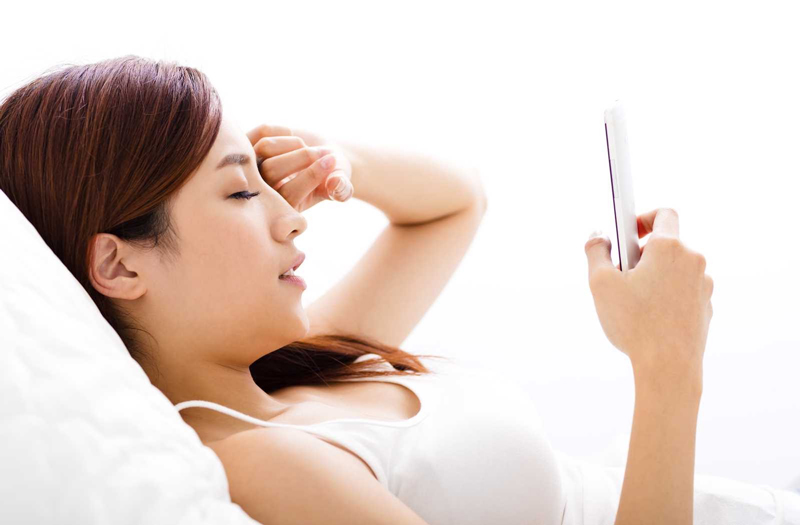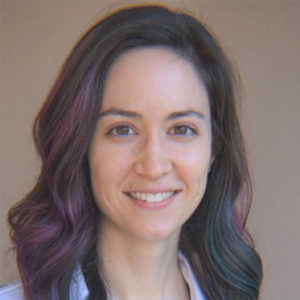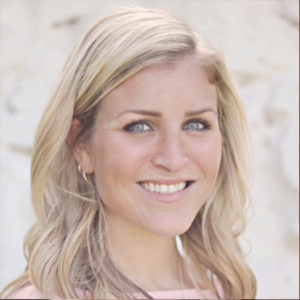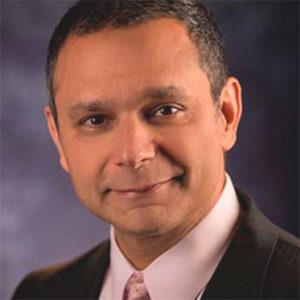Dry is something many Americans suffer from, affecting over 16 million people. Unfortunately, there’s no single, root cause for dry eye and no real cure either. But the right dry eye treatments can provide a lot of relief.
An optometrist providing dry eye therapy can help you craft a plan for dry eye relief, but part of that might involve some lifestyle changes. Some of these changes will be tailored to you, but a few general tips can help in most cases.
The Eye’s Tear Film
Dry eye is a chronic condition irritating your eyes due to tear film imbalances. A normal level of tears sits on your eyes, protecting the surface, especially your cornea, from the elements in something called the tear film. Your eyes’ tear film breaks down into 3 layers:
- Mucin Layer: mucous forms in specialized cells in your cornea and eyelids, acting as a base for the water layer.
- Aqueous Layer: here is where the hydration comes in. Tears issue from your eye’s lacrimal gland, soaking and oxygenating your eye overtop the mucin layer.
- Lipid Layer: fatty oil caps your eye’s aqueous layer, preventing overactive evaporation of the aqueous layer. Oil issues from your meibomian glands, little strand-shaped glands occupying your eyelids.

Don’t Get Suds in Your Eyes
Soap-suds, even the tear-free kind, can wash your lipid layer away. In that case, your dry eye symptoms can aggravate. Of course, the skin around your eyes needs to be cleaned anyway you can. If you don’t clean your eyelids, they could get infected (common with blepharitis) in a worst case scenario. To clean your eyelids when managing dry eye, we’ve found an effective means in BlephEx.
Don’t Smoke
Anyone who’s quit smoking cigarettes can tell you it’s one of the hardest things to do in life. And if you’re already suffering from dry eye when you reach for that pack of cigarettes, it might be even harder to stay your hand. But dry eye is about twice as bad for smokers. You might have to choose between smoking and eye comfort, and the way we see it, smoking’s not worth the contribution to dry eye symptoms.
Don’t Engage in Heavy Drinking
Physicians define heavy drinking as an average of 3.5 drinks per day, which also works out to 24.5 drinks taken within one week. If you find yourself bordering on these levels of alcohol consumption, you might be putting undue stress on your tear film. Stress on your tear film’s production levels can aggravate your dry eye symptoms or increase your risk of chronic dry eye for those at risk.
Do Get Treated for Other Ailments
Patients with a history of gout or thyroid disorder, arthritis, bone fractures, osteoporosis, and diabetes all endure an increased risk of dry eye severity.
Some medical conditions, including autoimmune disorders, can disrupt your tear film production, increasing your risk of dry eye.
- Sjogren’s syndrome
- Lupus
- Rheumatoid arthritis
- Scleroderma
Rosacea
There’s a strong association between rosacea, a dermatological condition, and evaporative dry eye (a problem with the lipid layer). As many as 85% of rosacea patients have meibomian gland dysfunction (MGD), meaning evaporative dry eye becomes very likely. Getting treatment for rosacea will help you avoid or manage dry eye.
Don’t Take Multivitamins Too Often
If you’re diligently taking multivitamin supplements, they could be a factor contributing to your dry eye symptoms. You might try setting them aside in favour of whole foods containing a similar balance of vitamins and minerals. You might want to get a diet rich in essential vitamins for eye health:
- Vitamin A
- Vitamin E
- Vitamin C
- Vitamins B6, B9, and B12
- Riboflavin
- Niacin
- Lutein and Zeaxanthin
- Omega-3 Fatty Acids
Do Take Your Medications
Unfortunately, the list of medications that can cause different types of dry eye is quite long. These medications, often taken orally, work on your body in the way they’re supposed to. But they have unintended results too.
Sometimes, they interrupt the lacrimal glands or the meibomian glands, and some medications can even upset your eyes’ mucous producing cells. Dry eye often results as a side-effect in these cases.
But we definitely can’t say “stop taking these meds for dry eye relief.” Oftentimes, you have to take medication to deal with a bigger problem, and failing to treat that problem just to relieve dry eye will almost certainly upset your health. You should always take your medications as directed by your doctor(s).
Do Try Caffeine in Moderation
Caffeine seems to help with dry eye symptoms because it increases production for the lacrimal glands. At the same time, moderation is all-important. The average cup of drip coffee has 95mg of caffeine, depending on the roast darkness of the beans.
As long as adults keep their caffeine intake under 300 mg per day, they can avoid the effects of too much caffeine, including dizziness, diarrhea, increased thirst, insomnia, headache, fever, and irritability.
Do Drink Lots of Water
Some types of dry eye seem to remedy when patients consistently get 10 glasses of water per day. Even if the type of dry eye you’re at risk for doesn’t specifically call for 10 glasses of water, it can still benefit your energy levels, physical performance, brain function, and other parts of your overall health.
Do Take Prescription Eye Drops
Prescription eye drops can help to treat blepharitis at an advanced stage, to stimulate the lacrimal gland, or to relieve gland inflammation at its source. In order, common prescriptions include:
Don’t Take Too Many Preservative-Free Eye Drops
Preservative-free eye drops might be a better choice for managing dry eye. Even though preservatives safeguard your eyes from accidental contamination (from bacteria), preservatives themselves can cause inflammation in your eyes.
Eye drops without preservatives don’t have that disadvantage. Still, you need to get them fresh from your optometrist to halt bacterial contamination from reaching your eye drops.
Do Ask Your Optometrist for Help
As you can see, it can require a little balance between your optometrist and yourself. There’s a lot you can do on your own, but getting professional dry eye therapy makes all the difference. The key lies in diagnosing the kind of dry eye you have and providing the best treatments and at-home instructions you can get. Book an appointment, and we can show you treatment for your dry eye, not just any dry eye.

 Dr. Phillips earned his Bachelor of Science in Chemistry at the University of Georgia before achieving his Doctor of Optometry from the Southern College of Optometry. There, he served as Vice President of the Georgia Optometric Student Association and provided free and cost-reduced optometric care to underserved patients in Mexico and Belize with the Student Volunteer Optometric Services to Humanity. He served his residency at Gainesville Eye Associates, focusing on ocular diseases.
Dr. Phillips earned his Bachelor of Science in Chemistry at the University of Georgia before achieving his Doctor of Optometry from the Southern College of Optometry. There, he served as Vice President of the Georgia Optometric Student Association and provided free and cost-reduced optometric care to underserved patients in Mexico and Belize with the Student Volunteer Optometric Services to Humanity. He served his residency at Gainesville Eye Associates, focusing on ocular diseases. Dr. Morgan Kickliter grew up in Hendersonville, Tennessee.
Dr. Morgan Kickliter grew up in Hendersonville, Tennessee. After growing up in Minersville, Pennsylvania, Dr. Price graduated from Susquehanna University in 2012 with a Bachelor’s Degree in Biology. Dr. Price continued her education at the Pennsylvania College of Optometry and completed her training in 2016. After graduation, Dr. Price spent her career studying advanced eye diseases and specialized Low Vision services and devices.
After growing up in Minersville, Pennsylvania, Dr. Price graduated from Susquehanna University in 2012 with a Bachelor’s Degree in Biology. Dr. Price continued her education at the Pennsylvania College of Optometry and completed her training in 2016. After graduation, Dr. Price spent her career studying advanced eye diseases and specialized Low Vision services and devices. Dr. Kapadia graduated with honors from the Michigan College of Optometry in 1999, where she received the Wesley-Jessen award for Outstanding Work in Contact Lenses. During her studies, she also served as President of Student Volunteer Optometric Services to Humanity (SVOSH), which works to improve the sight of millions of people in developing countries.
Dr. Kapadia graduated with honors from the Michigan College of Optometry in 1999, where she received the Wesley-Jessen award for Outstanding Work in Contact Lenses. During her studies, she also served as President of Student Volunteer Optometric Services to Humanity (SVOSH), which works to improve the sight of millions of people in developing countries. Dr. Kapadia originally hails from St. Catharines, Ontario, Canada where he earned his Bachelor of Arts degree from Brock University. He then went on to graduate with honors from the Michigan College of Optometry in 1998, where he specialized in contact lenses. After he graduated, Dr. Kapadia completed a one-year residency at the renowned Bascom Palmer Eye Institute in Miami, Florida, where he focused on ocular diseases.
Dr. Kapadia originally hails from St. Catharines, Ontario, Canada where he earned his Bachelor of Arts degree from Brock University. He then went on to graduate with honors from the Michigan College of Optometry in 1998, where he specialized in contact lenses. After he graduated, Dr. Kapadia completed a one-year residency at the renowned Bascom Palmer Eye Institute in Miami, Florida, where he focused on ocular diseases.